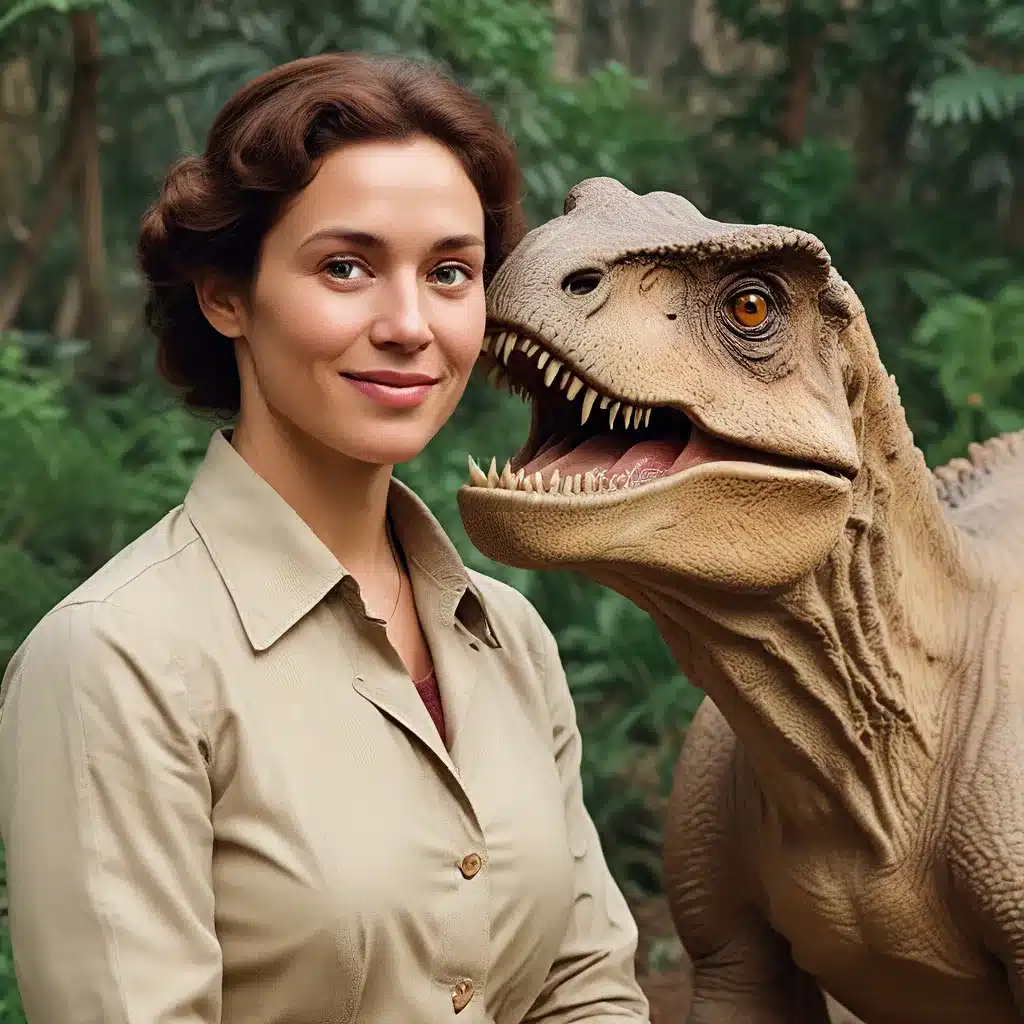
Unraveling Prehistoric Mysteries: Native American Perspectives on Fossils
Native Americans were the first to encounter the fossilized remains of prehistoric creatures that lay buried in the earth for eons. Long before the arrival of European explorers, indigenous cultures across the Americas had already observed and grappled with the significance of these mysterious bone fragments and stone imprints.
As scholars have uncovered, these early inhabitants did not merely dismiss the fossils as curiosities. Instead, they developed sophisticated explanations and narratives to make sense of the ancient lifeforms that had once roamed their lands. From the Crow, Blackfeet, and Sioux of the Great Plains to the Navajo and Paiute of the Southwest, Native Americans carefully observed, collected, and interpreted the fossil evidence around them.
Utahâs rich fossil beds, in particular, have yielded invaluable insights into the ancient past, with indigenous communities playing a vital role in uncovering and preserving these paleontological treasures. The Ancestral Puebloan and Fremont cultures, who inhabited the region centuries ago, left behind a wealth of rock art and other cultural artifacts that shed light on their understanding of the prehistoric world.
Confronting Erasure: Recovering Native American Voices in Paleontology
Despite their integral role in the history of paleontology, the contributions of Native Americans have often been overlooked or actively suppressed. As author Adrienne Mayor points out, early European and American naturalists, such as Georges Cuvier and Thomas Jefferson, were deeply interested in indigenous fossil lore and knowledge. However, this mutually informative relationship between Native and Western science was eventually severed, with prominent figures like George Gaylord Simpson actively dismissing the significance of Native American fossil traditions.
This systematic erasure of Native voices has had far-reaching consequences. As Mayor notes, many modern-day paleontologists express fears that acknowledging the depth of Native American fossil knowledge could lead to tribes banning fossil hunting on their lands or requesting the return of fossils in museum collections.
Rethinking Paleontological Discoveries: The Pioneering Women of Dinosaur Science
Alongside the suppression of Native American voices, the field of paleontology has also been historically dominated by men, often overlooking the crucial contributions of pioneering women in the discipline. Mary Anning, for example, was a 19th-century fossil hunter whose discoveries along the Jurassic Coast of Dorset, England, revolutionized our understanding of prehistoric life.
Anning’s findings, including the near-complete skeletons of an Ichthyosaurus Communis and a Plesiosaurus Macrocephalus, were instrumental in shaping the emerging science of paleontology. Yet, despite her groundbreaking work, Anning’s contributions were often marginalized or attributed to her male counterparts.
In recent years, however, there has been a growing movement to celebrate the legacy of these forgotten women of paleontology. The recent release of commemorative stamps by the Royal Mail honoring Anning’s discoveries is just one example of this long-overdue recognition.
Bridging Cultures, Preserving the Past
As we continue to unravel the mysteries of the prehistoric world, it is essential that we acknowledge and incorporate the diverse perspectives that have shaped our understanding of dinosaurs and other ancient lifeforms. By embracing the knowledge and insights of Native American cultures, as well as the groundbreaking work of female paleontologists, we can deepen our appreciation for the rich tapestry of paleontological history.
The Lost Kingdoms is dedicated to celebrating the untold stories and forgotten voices that have contributed to our collective understanding of the past. Through rigorous research, thoughtful analysis, and engaging storytelling, we aim to shed light on the pivotal roles played by underrepresented groups in shaping the discipline of paleontology.
Uncovering the Jurassic Treasures of Utah
The state of Utah stands as a prime example of the crucial intersection between Native American fossil traditions and modern paleontological discoveries. Home to an abundance of Jurassic-era fossils, Utah has long been a hub of paleontological activity, attracting researchers and enthusiasts from around the world.
The Ancestral Puebloan and Fremont cultures, who inhabited the region centuries ago, revered the land and its fossilized remains, often collecting and preserving them for spiritual and practical purposes. These ancient inhabitants recognized the significance of the prehistoric creatures that had once roamed their lands, and their oral traditions and cultural artifacts offer invaluable insights into the early history of paleontology.
Honoring the Legacy of Women in Paleontology
In the modern era, Utah has also played a crucial role in celebrating the contributions of pioneering women in the field of paleontology. The recent stamps honoring Mary Anning’s discoveries serve as a powerful reminder of the enduring impact of these unsung heroes of science.
As we continue to explore the rich fossil beds of Utah and uncover new insights about the prehistoric world, it is essential that we amplify the voices of all those who have dedicated their lives to understanding the past. By honoring the legacy of Native American fossil traditions and celebrating the achievements of female paleontologists, we can build a more inclusive and comprehensive understanding of the history of life on Earth.
Conclusion: A Holistic Approach to Paleontological Exploration
The story of paleontology is one of diverse perspectives, untold narratives, and groundbreaking discoveries. As we continue to explore the ancient past, it is crucial that we embrace a more holistic approach to understanding the prehistoric world.
By recognizing the vital contributions of Native American cultures and pioneering women in the field, we can deepen our appreciation for the complex and multifaceted nature of paleontological history. Through rigorous research, thoughtful analysis, and inclusive storytelling, we can unravel the mysteries of the Jurassic era and beyond, honoring the legacies of those who came before us and paving the way for a more inclusive and comprehensive understanding of our shared past.


